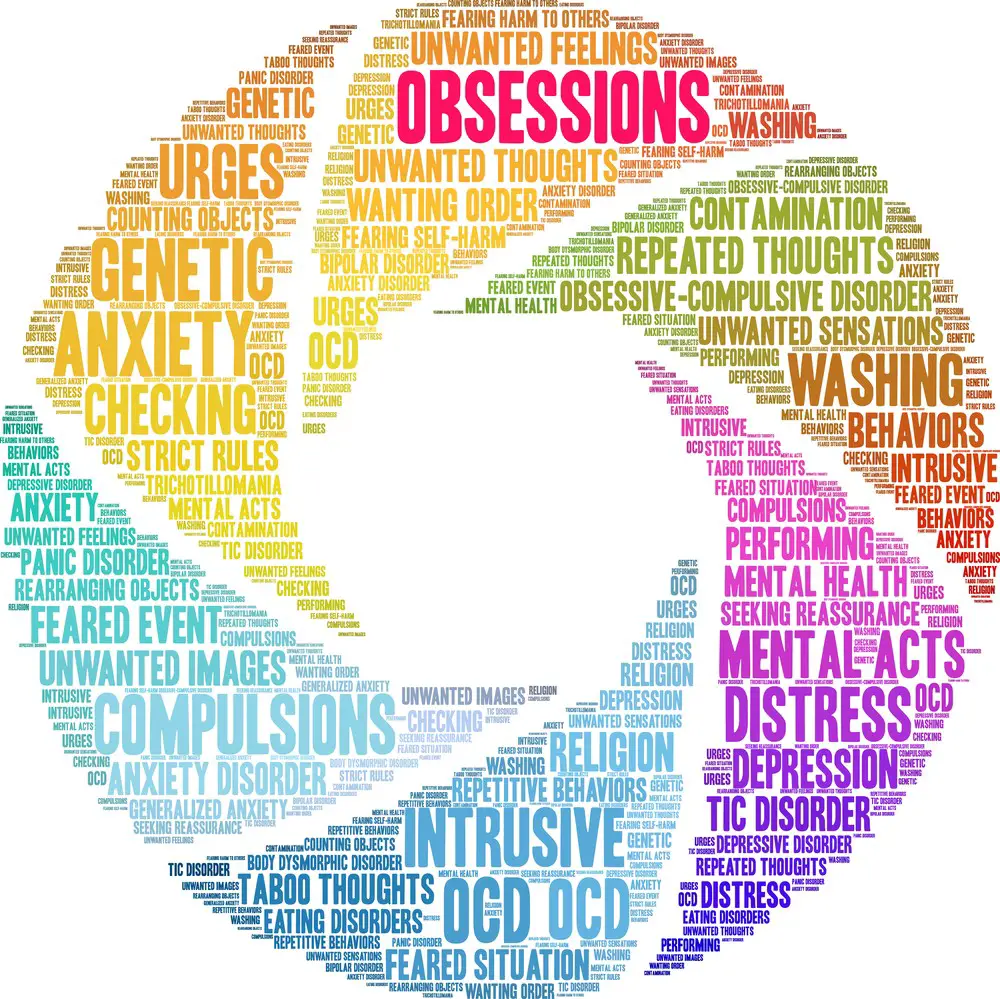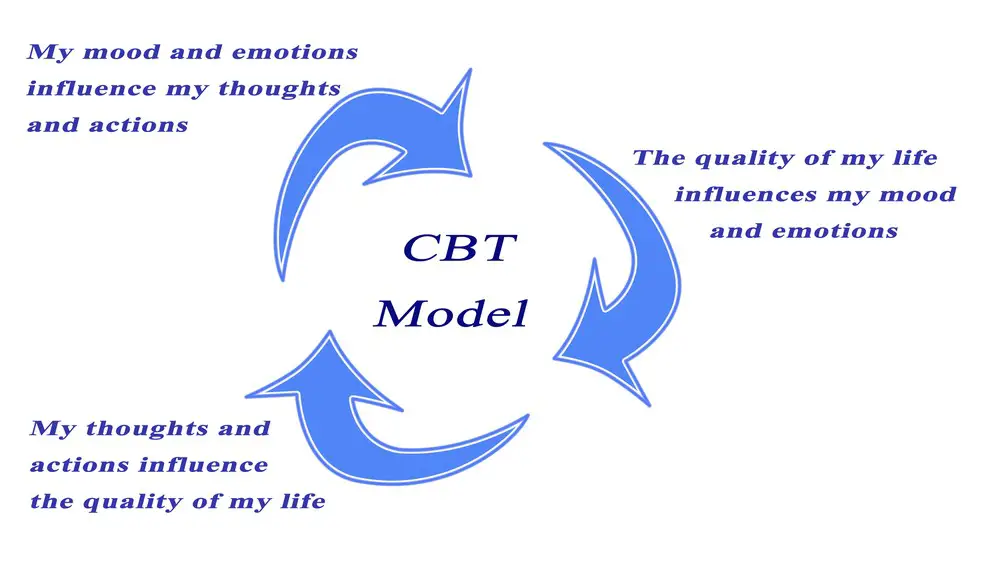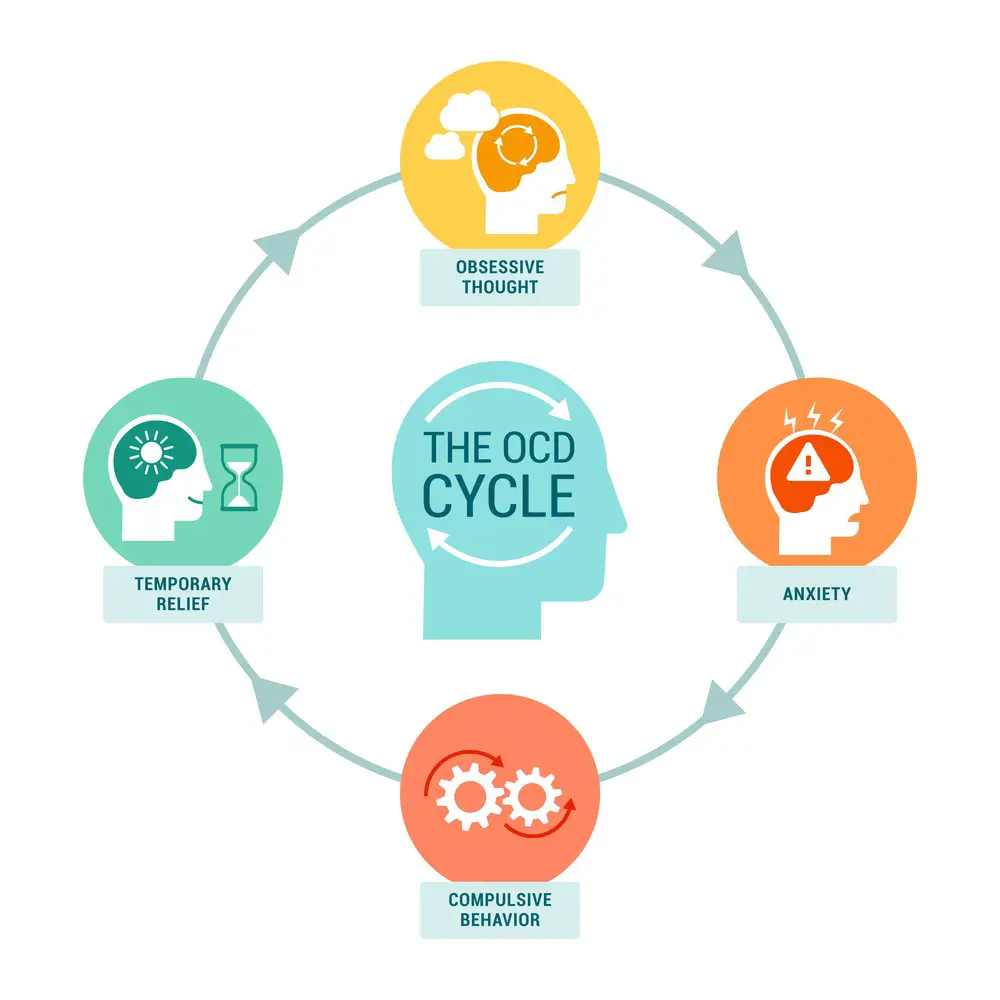As a BetterHelp affiliate, we receive compensation from BetterHelp if you purchase products or services through the links provided
Obsessive-compulsive disorder (OCD) is a mental health condition that can be incredibly disabling and hard to manage. And according to NIMH, “OCD affects 2.5 million adults or 1.2% of the U.S. population”.
But despite its prevalence, many people don’t understand how it works—and this lack of knowledge can make managing the condition more difficult.
OCD is an anxiety disorder characterized by intrusive thoughts, obsessions, and repetitive behaviors or compulsions.
These obsessions can be related to a wide range of topics, from fear of contamination to a preoccupation with order or symmetry. Likewise, compulsions can range from washing and cleaning rituals to repeating words and phrases out loud.
Although obsessions and compulsions vary from person to person, one common thread connects all OCD sufferers—the OCD cycle. This cycle is a vicious circle of anxiety and fear that can be hard to break.
If you know someone with OCD or you suffer from it yourself, understanding the OCD cycle is an essential part of treating the condition.
This article will explore what the OCD cycle looks like and how it can be broken.

What is an OCD Cycle?
The OCD cycle is a repeating pattern that revolves around obsessive thoughts and compulsive behaviors. It starts when an individual experiences an intrusive thought or obsession.
For example, a person with OCD might obsess over the idea that something terrible might happen if they don’t follow specific rituals or behaviors. In response to this obsession, they might feel overwhelming anxiety and fear.
To reduce their anxiety, the individual then engages in compulsive behavior – such as washing their hands, repeating specific phrases, or checking locks multiple times. This is done to neutralize the fear or gain a sense of control.
However, compulsive behavior does not reduce the underlying anxiety and can often worsen it over time.
The cycle begins again as the individual experiences more intrusive thoughts and fears, leading to more compulsive behavior.
The Stages of OCD
OCD is composed of several distinct stages or phases.
1. Obsession
This is the first stage of OCD, where an individual experiences intrusive thoughts or obsessions related to a particular fear or concern.
For example, they may obsess over the idea that something terrible might happen if they don’t follow specific rituals or behaviors
2. Anxiety
These obsessive thoughts can cause intense feelings of fear and anxiety. The individual may feel overwhelmed by the idea of not being able to control the obsession
3. Compulsion
To reduce their anxiety, the individual then engages in compulsive behavior—such as washing their hands, repeating specific phrases, or checking locks multiple times.
This is done in an attempt to neutralize the fear or gain a sense of control
4. Relief
After engaging in compulsive behavior, the individual may experience temporary relief from their obsessive thoughts and anxiety.
However, this feeling of relief does not last long, and soon the cycle begins again as the individual experiences more intrusive thoughts and fears.
Every individual with OCD will experience the symptoms of this cycle differently, but the overall pattern is similar: an obsession triggers anxiety, which leads to compulsive behavior and temporary relief. The cycle starts again as the individual experiences more obsessive thoughts and fears.
How Does OCD Affect Everyday Life?
The OCD cycle can be incredibly disruptive and significantly impact an individual’s day-to-day life.
For instance, someone with OCD might struggle to concentrate in school or work because of their intrusive thoughts. Or they might spend hours daily engaged in repetitive behaviors such as washing or checking locks. This can make having healthy relationships or engaging in meaningful activities hard.
It can also be difficult for someone with OCD to recognize that their thoughts and behaviors are problematic. This is known as “OCD blindness” and can make it even harder for them to break the cycle.
It can be extremely frustrating and disheartening to be stuck in the OCD cycle and feel like there’s no way out. But it is important to remember that recovery is possible with the proper treatment and support, and many people find ways to manage their OCD and live complete, happy lives.
How Do You Break the OCD Cycle?
Although it can feel like you’re stuck in an endless loop of obsessive thoughts and compulsive behaviors, there are things you can do to help ease OCD symptoms and work towards breaking the cycle.
It’s important to understand that it will take work to manage your OCD, and it may not happen overnight. But by taking small daily steps, you can progress toward recovery and improve your overall well-being.

Cognitive-behavioral Therapy (CBT)
CBT can help someone identify the cycle of negative OCD thoughts, feelings, and behaviors and develop healthier ways of thinking about them.
This therapy focuses on helping patients challenge their thoughts, break down compulsive behaviors, and create new habits and responses to their obsessions.
It teaches how to reduce anxiety by evaluating evidence for and against specific beliefs, recognizing patterns in thoughts and emotions, understanding how these patterns affect behavior and realizing when it is necessary to seek professional help for further guidance.
Exposure Response Prevention (ERP)
ERP is a form of cognitive behavioral therapy that involves facing fears head-on by exposing yourself repeatedly to your obsessive thoughts without engaging in compulsive behaviors or rituals.
This method teaches people to cope with their anxiety without resorting to compulsive behaviors.
Patients learn relaxation techniques to tolerate the increased anxiety caused by exposure while also learning self-control strategies such as ignoring intrusive thoughts or blocking out distracting environmental triggers.
Mindfulness
Mindfulness practice helps people become more aware of themselves and their environment.
By paying attention to sensations within the body, such as breathing or physical tension that may accompany an obsession, individuals can become better at recognizing rising feelings before they spiral into intense fear or dread associated with compulsions.
Additionally, mindful eating techniques can be used as a preventative measure against binging or other unhealthy food choices associated with OCD rituals, such as counting calories or avoiding certain foods altogether.
Medication
Although no single medication is specifically designed to treat OCD symptoms alone, medications that treat depression have been helpful in some cases.
These medications successfully reduced overall anxiety levels, which can decrease the severity of obsessions and compulsions related to OCD symptoms.
For example, anti-depressants like serotonin reuptake inhibitors (SSRIs) have been found effective for treating moderate cases of OCD.
This is by raising serotonin levels, helping to regulate moods more effectively over time, and reducing some symptoms associated with OCD, including intrusive thoughts or repetitive behavior patterns.
The aim is to find a combination of the best treatments to help manage your OCD and break the cycle to live a more fulfilled life.
Finding an approach that works best may take trial and error, but it’s important not to give up hope and seek out the right support system if needed.
Summary: Breaking Free from the OCD Cycle
Millions of people suffer from Obsessive Compulsive Disorder (OCD), which can cause an endless loop of obsessive thoughts and compulsive behaviors.
Fortunately, some treatments can help ease OCD symptoms and work towards breaking the cycle. In some cases, working towards recovery can involve Cognitive-behavioral Therapy (CBT), Exposure Response Prevention (ERP), mindfulness practices, and even medications.
Finding the right approach may take time, but it is possible to find relief from OCD symptoms and live a healthier life.
FAQ
- How to Transform a Home’s Patio Space into a Relaxing Space - March 23, 2025
- 5 Strategies to Use a Cell Phone to Help Manage Your Stress - March 23, 2025
- 4 Ways to Use Measurements to Create a Relaxing Sleep Space - March 23, 2025
This site contains affiliate links to products. We will receive a commission for purchases made through these links.



